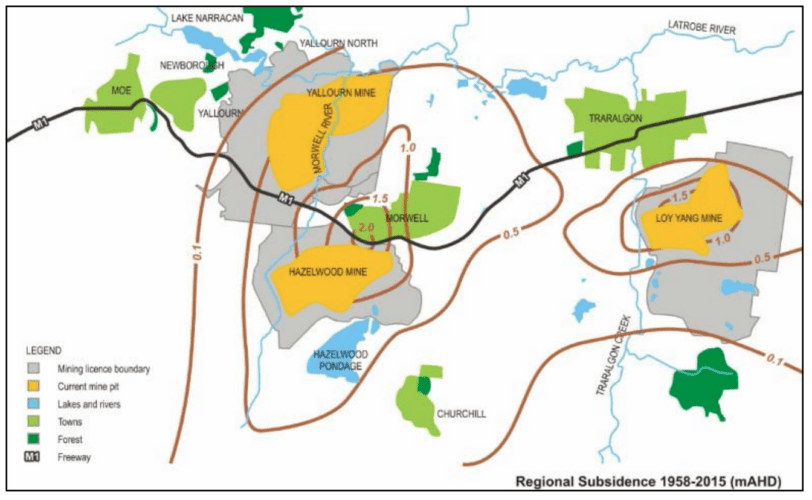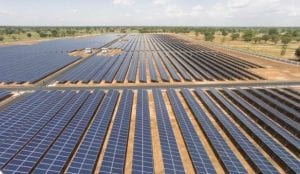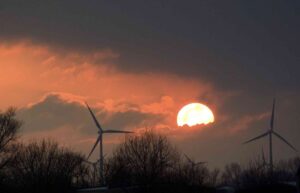Engie’s proposed Hazelwood lake is the latest fossil fuel project to be scrutinised by the federal government’s more muscular environment department, with the rehabilitation project now subject to the ‘water trigger’.
The proposal to turn a 1.2 hectare section of the former coal mine into a lake must now be assessed and approved under the Environment Protection and Biodiversity Conservation Act (EPBC), the government revealed today.
Engie is set to release the scoping requirements for an environmental effects statements, ordered by the Victorian government a year ago, in a matter of weeks, Friends of Latrobe Water spokesperson Hayley Sestokas told RenewEconomy.
The EPBC and EES processes will run in parallel.
Pit lakes under scrutiny
As part of the rehabilitation of the Hazelwood open pit coal mine and power plant, Engie wants to fill the hole with 638 billion litres of water over 20 years using water from the LaTrobe river and an underground aquifer.
Latrobe Valley residents asked new federal environment minister Tanya Plibersek in July to scrutinise the project, on the grounds that the lake will use so much water – double that of Melbourne’s yearly consumption.
Any significant impacts on water resources resulting from large coal or coal seam gas developments trigger an assessment under the EPBC Act. The notice to Environment Victoria, seen by RenewEconomy, shows Engie will need to assess how their proposal will affect the Ramsar listed Gippsland Lakes, and local threatened and migratory species.
To date, the use of the water trigger has been restricted to new extraction projects.

Environment Victoria says the Hazelwood news means the scope also applies to mines being rehabilitated as ‘pit lakes’ and sets an important precedent as coal power stations close across the country in coming years.
“This decision makes clear the impacts of mining don’t end when the digging stops and the potentially devastating impacts of using huge amounts of water at every stage of coal mining must be investigated,” Environmental Justice Australia lawyer Chloe Badcock said in a statement.
“Taking so much water out of the river system cannot sustain important river flows and would have devastating impacts to river health and threatened animals like golden bell frogs and Australasian Bitterns that call rivers, and the internationally protected Gippsland Lakes, home. Now we know the government must ensure Engie properly investigates these devastating impacts.”
Sestokas says they’re particularly please with the EPBC decision because it establishes a precedent for the other two mine sites, Yallourn and Loy Yang, which are set to close in the coming years and whose owners are also wanting to rehabilitate the sites with pit lakes.
She says of Hazelwood, the community ultimately just wants to see all plans, not just the cheapest.
“The situation we’re in after almost a century of coal mining is all of the solutions are trade offs. Currently on the table the other solutions are dry land form rehabilitation, or alternate water sources such desalinated water or recycled water,” she told RenewEconomy.
“There are also potential issues with these other types of rehabilitation so what the community is calling on is not just to be given one option that’s the cheapest Engie wants to take. We’re the ones that have to live with hits, Engie gets to pack up and move on.”
Engie spokesman Ryan Auger says they have welcomed the decision from the federal government, because it gives certainty on the breadth and substance of our EES and EPBC environmental and technical studies.
“Engie Hazelwood had anticipated and planned a rigorous assessment of surface and groundwater impacts from the Hazelwood mine, and as such structured its studies program to account for these additional requirements,” he said.
“We will continue working closely with all levels of government, regulators, traditional owners, local stakeholders and special interest groups to progress our commitment to deliver a safe, stable, sustainable, non-polluting landform back to the Latrobe Valley community.”
Still dirty
The Hazelwood coal mine and power plant closure with just five months notice in 2017, causing major ructions in the energy market but also shuttering Australia’s dirtiest energy generator.
Reliant on brown coal for fuel from its neighbouring mine, Hazelwood was responsible for one-seventh of Victoria’s total greenhouse gas emissions and around 3 per cent of Australia’s total emissions. It consistently ranked as one of the world’s most emissions intensive power stations, producing around 1.6 tonnes of CO2-e per megawatt-hour of electricity generation.
As well as the lake, owner Engie’s plans for the 4000 hectare site are for installing a 150MW/150MWh battery, and exploring potential buyers and investors in the land once the soil has been made safe.
But the project is complicated.
As well as community concerns about the sheer amount of water required — the town of Morwell is directly next to the site — there are worries over whether filling the pit will cause toxic coal ash dumps to flush through Gippsland waterways, and there is the difficulty of stabilising the landscape, as there is little soil left to fill in the former mine.
Engie says turning it into a lake solves those stability concerns.
Further complicating the rehabilitation is Hazelwood’s proximity to the Yallourn and Loy Yang coal power plants and mine sites, which are of equal size or larger.

EnergyAustralia plans to close Yallourn power station by mid-2028 and AGL is shuttering Loy Yang A plant between 2048 to 2045. But companies plan to turn their pits into lakes.
A report by geologist and hydrogeologist Dr Steven Campbell in mid 2022 highlighted the issues in turning the Hazelwood pit into a lake.
“Key concerns for completing the Hazelwood Project include: water sources and their
sustainability; stability of mine walls (batters) and the [coal ash dump Hazelwood Ash Retention Area] HARA during and after filling of the pit lakes; the fate of coal combustion residuals and other wastes located both inside and outside of the Hazelwood mine pit; and the potential presence, distribution, and risk posed by the family of chemical compounds collectively known as PFAS,” the report said.










